Posted by Dan Arndt
Alberta has such a wide variety of environments that I’m constantly finding new areas, new regions, and entirely new birds around the province. One area that I have never spent any significant time in was in the south-east corner of the province. In fact, the last time I ventured east of Strathmore was in 2005, when I visited Dinosaur Provincial Park in my under-grad to do some prospecting in some of the private access coulees with a friend of mine working on his Ph. D.
I had hoped to visit Cypress Hills Interprovincial Park this summer, or at least Writing-On-Stone Provincial Park, time got away from me and other priorities came up. Thankfully, fellow blogger David Pugh, over at “A Calgary Birder” had some free time on his hands and asked me along to visit some spots he had heard good things about.
Our route was planned, and we headed out at just after 4:30 in the morning with plans to visit Kinbrook Island Provincial Park, Many Islands Lake, Cypress Hills, Pakowki Lake, and a few other stops along the way.
We arrived at Kinbrook Island Provincial Park campground at just after sunrise. The sloughs on each side of the road in were buzzing with insects, and a few Yellow-headed Blackbirds as well as the ubiquitous Red-winged Blackbirds were feasting. We managed to spot some early peeps for the day, along with some Spotted Sandpipers, a few Greater and Lesser Yellowlegs, and we even managed to find some Long-billed Dowitchers in the early-morning light.
After a brief drive through the campground listening for warblers, we stopped at the south end to look over the lake. American White Pelicans, hundreds of eclipse plumage ducks, and even a Common Loon were visible from the point, but I think one of the best birds of the day (so far) was this lone Brown Thrasher, who was mixed with a small flock of Yellow-headed Blackbirds feeding on insects beside the road.
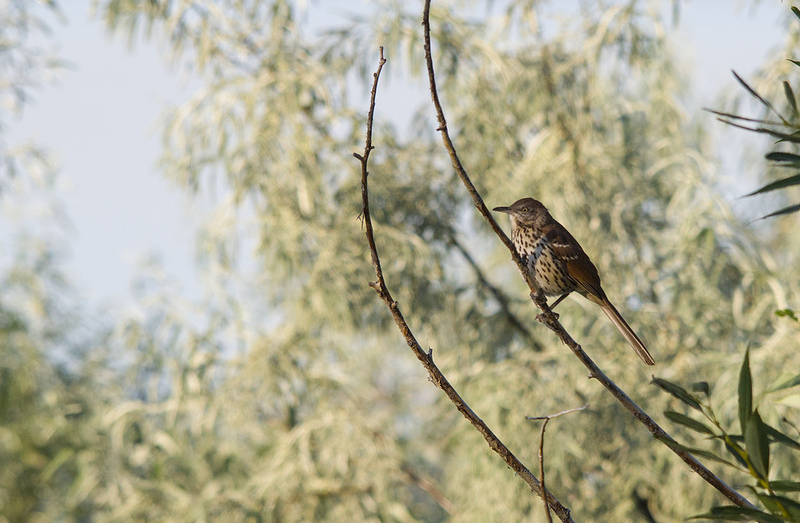
Brown Thrasher – My second ever sighting of this impressive bird.
One final stop at the far south end of the campground was a row of low brush along the lake front, which was inhabited by no less than ten Western Kingbirds, the same number of Eastern Kingbirds, some Wilson’s Warblers, and a few other species of flycatchers, like this (seemingly dark) Western Wood-Pewee.
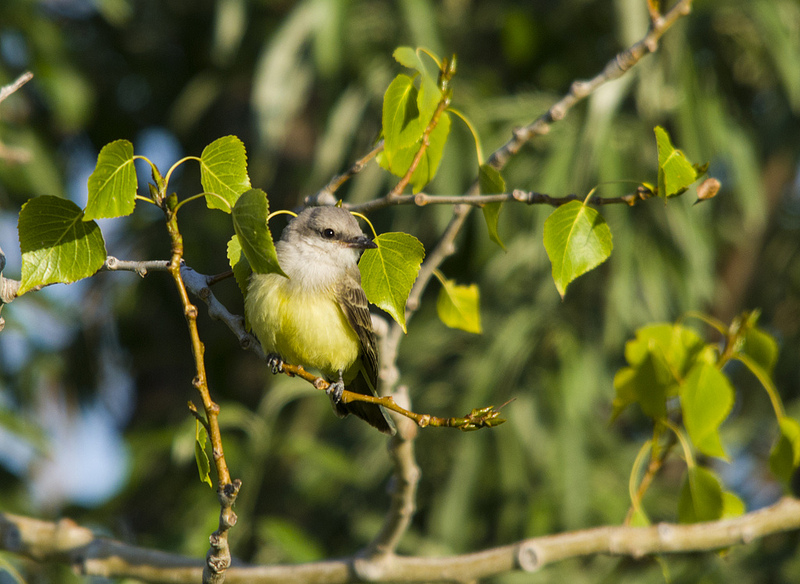
Western Kingbird
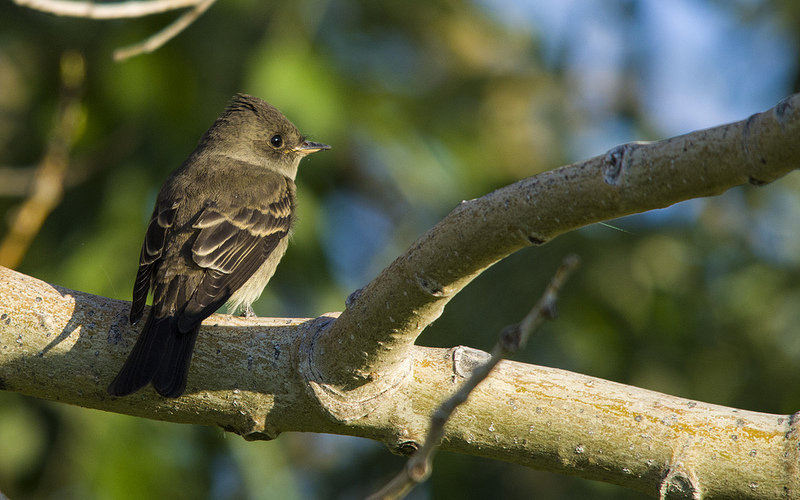
Western Wood-Pewee
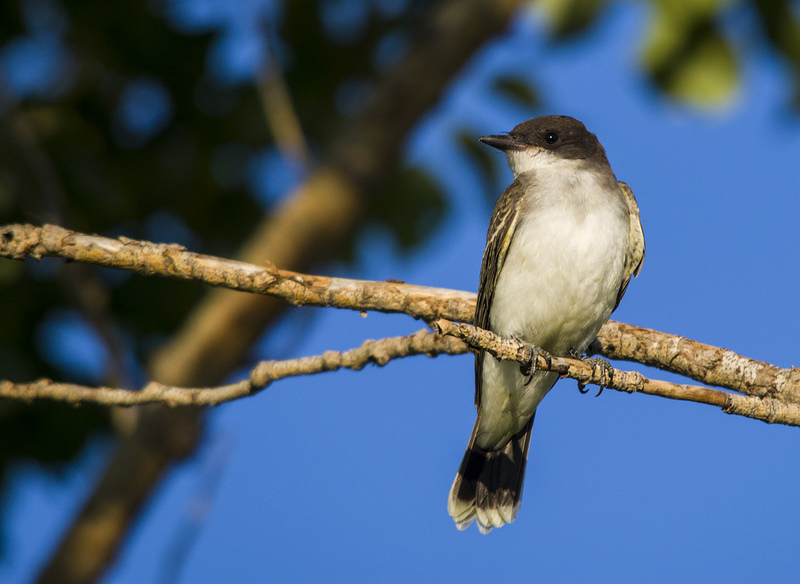
Eastern Kingbird
After a very successful first stop, we moved out and headed further east to Medicine Hat and points eastward. Just outside of Suffield, I spotted what appeared to be a raptor in the field sitting on the ground, presumably dispatching its prey. I hesitated only for a moment, but thought it would be a great photo opportunity, so we turned around to get a closer look. On the second pass, David and I scanned the field like hawks ourselves, until we both, almost simultaneously blurted out “Burrowing Owl!?”. The brakes were applied liberally, and as we both scrambled with our gear, it seemed our sudden stop had spooked a few of them, who flew off in various directions. Two brave holdouts remained, with one coming quite close to inspect us, then returning to the burrow. The other, a juvenile, attempted to hide in the tall grass at the edge of the clearing.
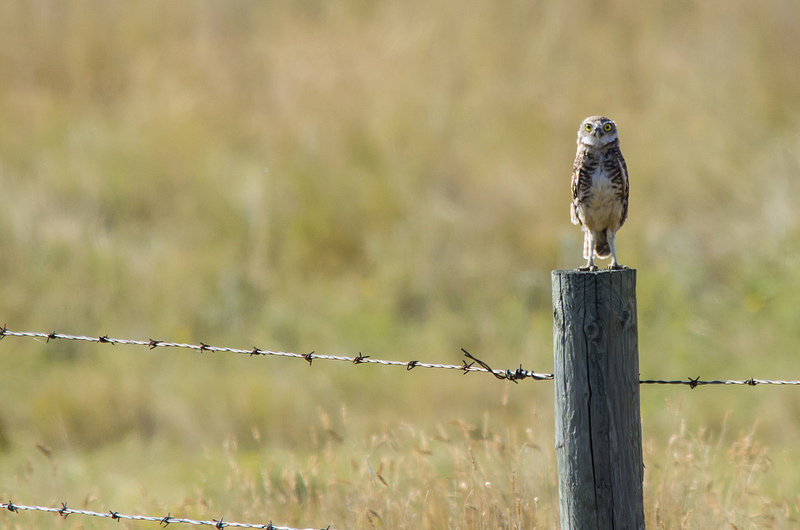
Burrowing Owl – This brave owl inspects the curious trespassers.
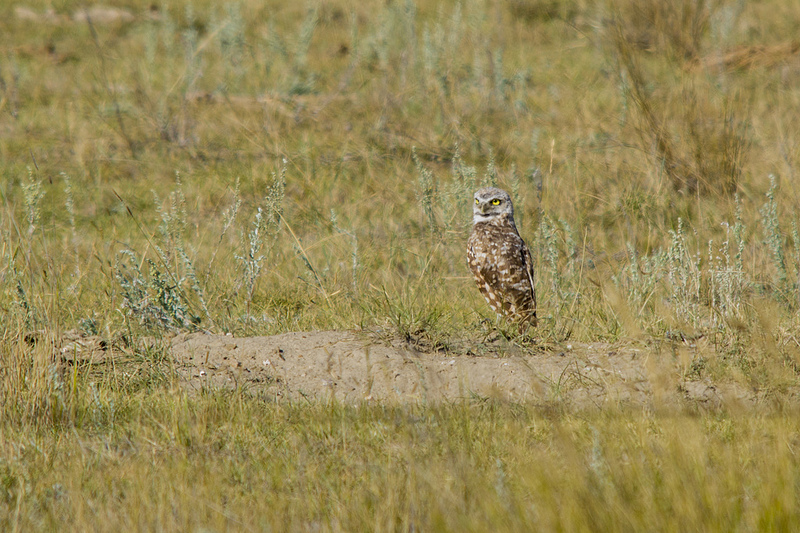
Can you spot the second owl in this photo?
After spending about a half hour watching these beautiful little owls from a distance, we decided it was time to continue onwards. We rolled through Medicine Hat without incident, spotting many different birds as we drove, but nothing new for the day until we turned north. The terrain was visibly different than even the farmers fields near Calgary, and the birds present were distinctly “prairie” species, unlike those nearby which are a mix of boreal, grasslands, and foothills species. The first major indicator of this was the massive Ferruginous Hawk that we passed as we headed to Many Islands Lake. Sadly, I didn’t get any shots of the bird until it was too far off to distinguish. As we got onto some of the side roads though, we did find a small slough, along with its iron-fisted dictator overseeing its subjects, which included Mallards, Northern Pintails, and Green-winged Teals primarily. The dictator of which I speak is the majestic and impassionate Peregrine Falcon, ruler of these wetlands.
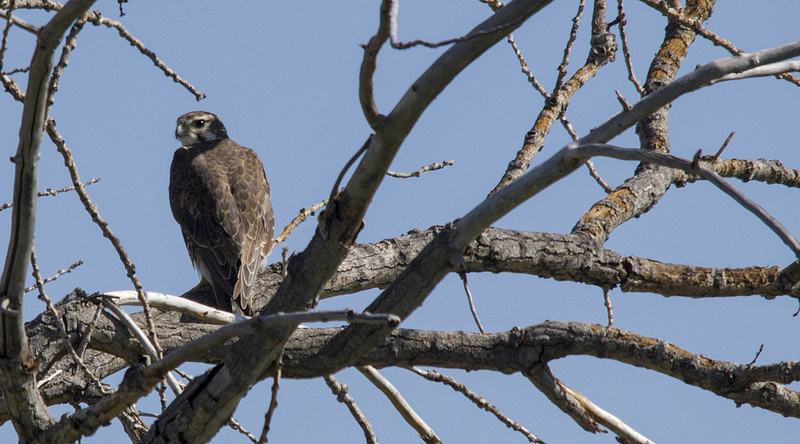
Always managing to look regal, Peregrine Falcons are one of my favourite raptors.
As we neared Many Islands Lake, the variety of the sparrows was made up of old familiar faces, some less familiar ones, and some brand new ones to both David and I. First, the Savannah Sparrows were numerous, but nowhere near as widespread as the Vesper Sparrows. Topping off the list though were no small number of Lark Buntings, which we were certain were some strange morph of Vesper or Lark Sparrows… turns out we were both dead wrong! Another old familiar face were the many and numerous Horned Larks, always posing perfectly for the camera.
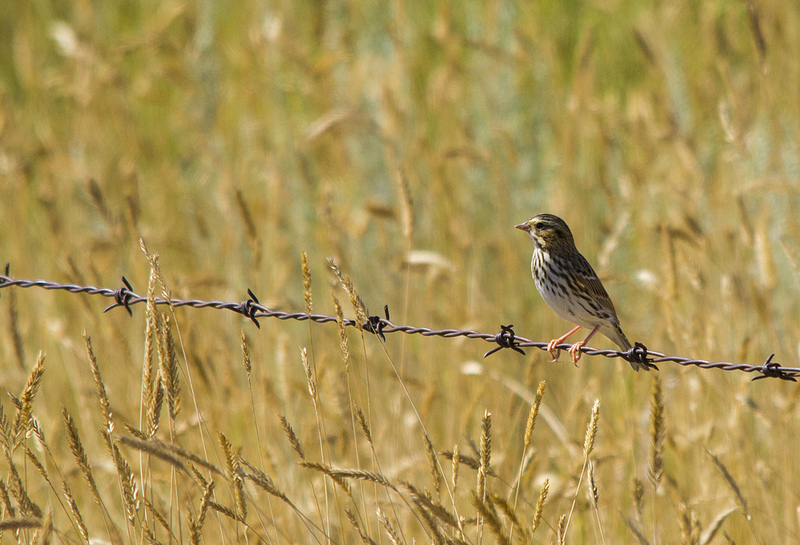
Savannah Sparrow
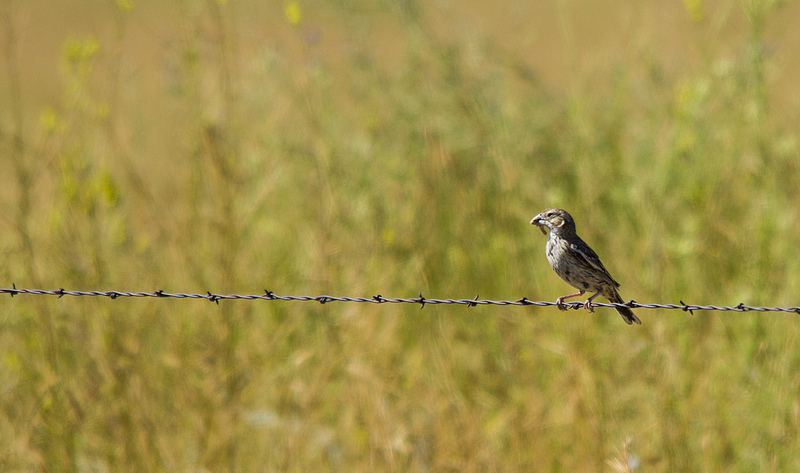
Lark Bunting
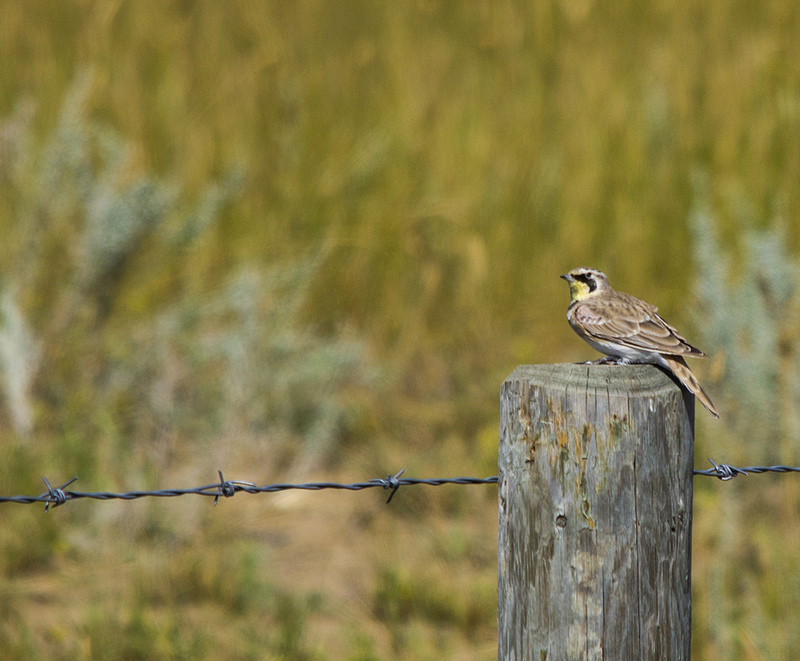
Horned Lark
And while we tend to focus on the birds we see on our outings, one cannot ignore the sheer number of Pronghorn Antelope at the SE corner of the province. In the span of the day, we saw no less than 40 of these beauties, but none came quite as close as this large male.

Pronghorn Antelope
At Many Islands Lake we saw hundreds of ducks, shorebirds, and even managed to separate out a pair of Hudsonian Godwits among the numerous Marbled Godwits out on the islands, along with a few Willets, Greater and Lesser Yellowlegs, and Killdeer. Unfortunately they were too far out, and the sun far too hot, to allow for any acceptable photos. Atmospheric aberration at 500mm on a 30+ degree day is stunningly messy.
From Many Islands Lake, we headed south through Medicine Hat, and decided for a brief stop at Red Rock Coulee, between Medicine Hat and Pakowki Lake, turning up a few more Horned Larks, Rock Wren, and our first distinctively clear looks at a Lark Sparrow.
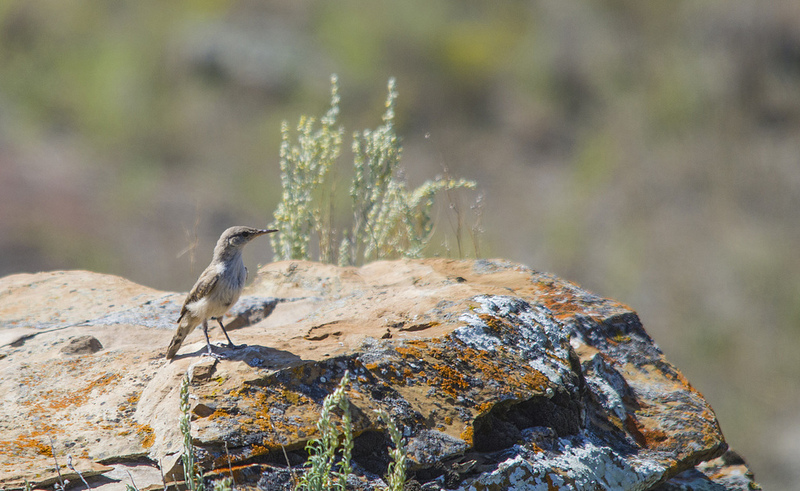
Rock Wren
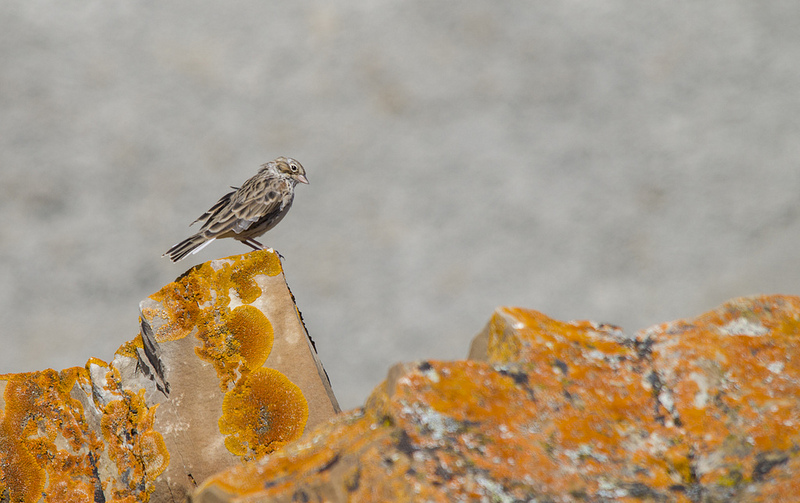
Vesper Sparrow
Between Red Rock Coulee and Pakowki Lake, we stopped at a few drainage ditches that ran under the road through culverts, and came across a pair of Loggerhead Shrike. Another bonus bird for the day!
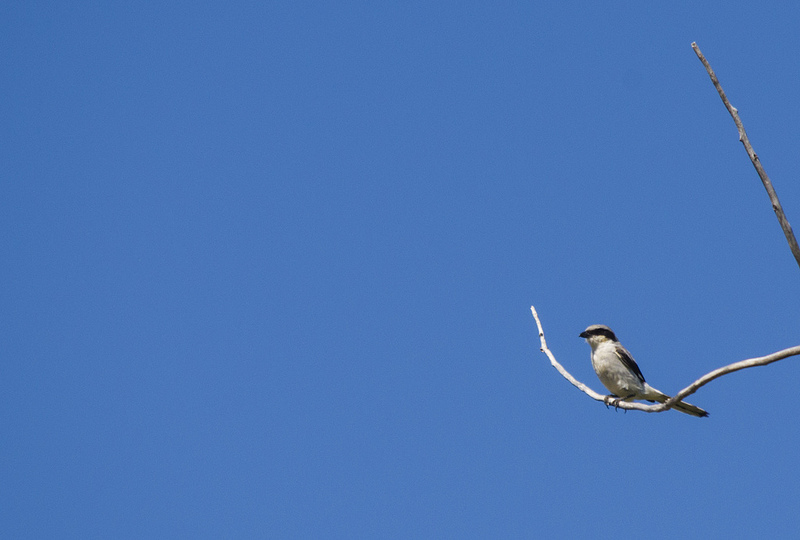
Loggerhead Shrike
Pakowki Lake gave us good views of Pectoral, Baird’s, and even a lone Stilt Sandpiper. It was a fortunate find, but not so fortunate for the bird who appeared to be suffering from a broken wing. Out on the lake further we spotted Western Grebes, American Avocets, many more Least and Semipalmated Sandpipers, Killdeer, and Willets.
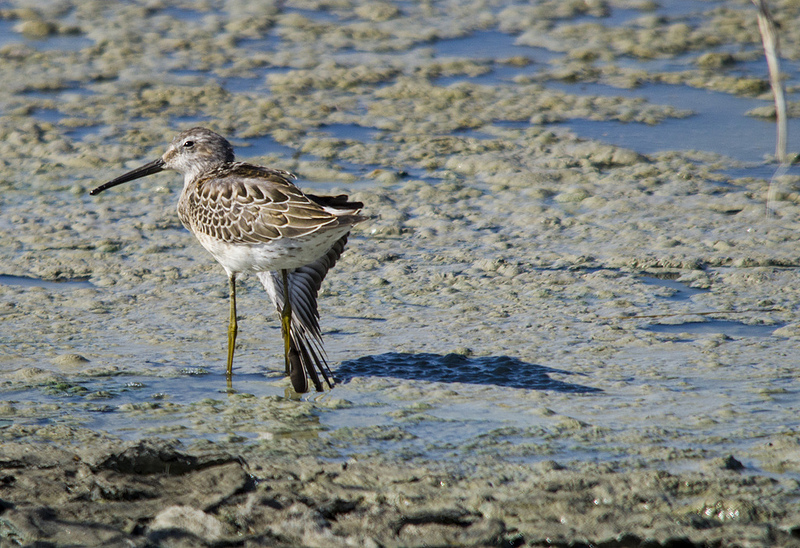
Stilt Sandpiper
Leaving Pakowki Lake, we stopped in at Foremost to fill up for gas and spotted a kettle of Common Nighthawks flying overhead. I had no idea they grouped up into such large groups to migrate. David and I estimated at least 40 individuals flying overhead, and at least half that many had already passed before I looked up to investigate that odd “PEENT!” call that they’re so well known for.
We finished the day at Frank Lake in the fading light, adding Clark’s Grebe, Great-horned Owl, and a few others to our list before calling it a day and heading home. In total, our species list came to 104 for the day, with a handful of lifers for the both of us, and many great new places to explore!









































